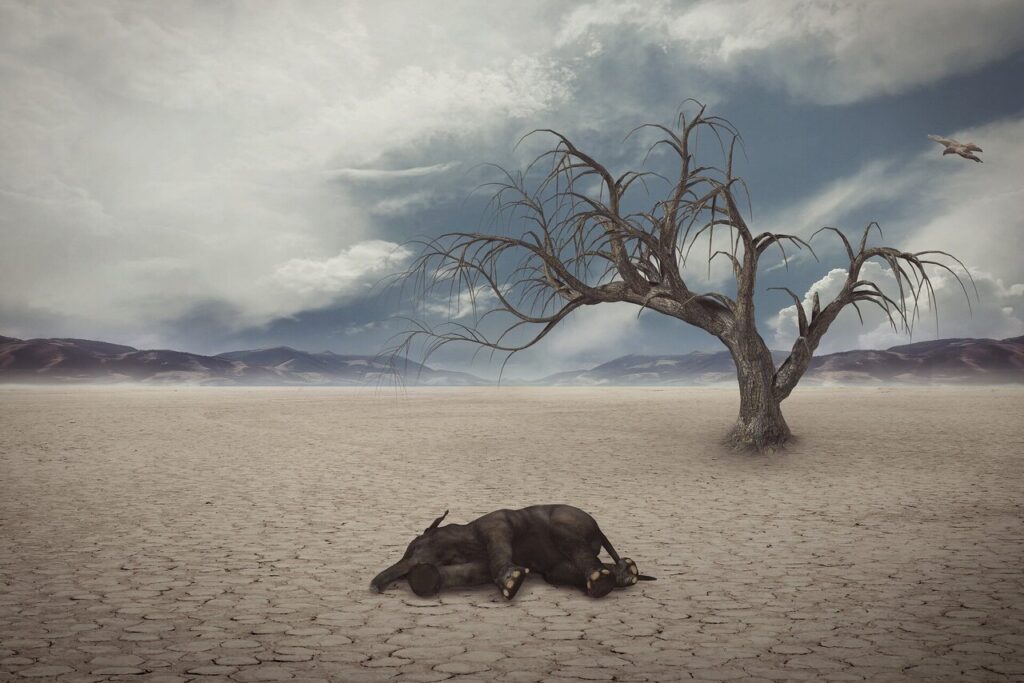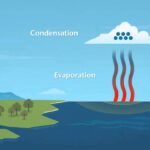Have you ever heard that tigers, polar bears, or bees might disappear one day? This is not just a scary story — it’s something that is really happening in many parts of the world.
Many animals today are becoming endangered (in danger of disappearing) or even extinct (completely gone). There are many reasons behind this, but one of the biggest is something we hear a lot about: climate change.
Let’s break this down in simple words so you can understand what’s going on — and why we should care.
🐾 What Does “Disappearing Animals” Mean?
When we say animals are “disappearing,” it means:
- There are fewer and fewer of them left.
- They may not be able to reproduce (have babies) fast enough to survive.
- Their homes (habitats) are getting destroyed or changed.
- Some animals have already gone extinct — they are gone forever.
🧊 What Is Climate Change?
Climate change means the Earth’s weather patterns are changing. It’s not just about warm summers or cold winters — it’s about long-term changes in temperature, rainfall, and natural seasons.
Most of this change is caused by humans — mainly by burning coal, oil, and gas which releases harmful gases (like carbon dioxide) into the air. These gases trap heat around the Earth like a blanket, making the planet hotter and more unstable.
This leads to:
- Melting glaciers
- Rising sea levels
- More heatwaves and droughts
- Stronger storms and floods
- Changing seasons and rain patterns
🐘 How Does Climate Change Affect Animals?
Animals depend on nature to survive — the temperature, the food, the water, and the place they live. When the climate changes, all of this changes too. Many animals can’t adjust quickly enough.
Here’s how:
1. Loss of Habitat
Climate change often destroys or changes the natural homes of animals.
- Polar bears live on sea ice in the Arctic. But due to global warming, the ice is melting fast, and they have nowhere to hunt or rest.
- Coral reefs, which are home to thousands of fish and sea creatures, are dying due to warming ocean water (this is called coral bleaching).
2. Food Shortages
Animals need food to survive. But when the climate changes:
- Plants may not grow properly.
- Insects may come too early or too late in the season.
- Fish may move to cooler waters, far from their usual places.
Example:
- In some forests, birds return from migration expecting insects, but the insects already came and went. This means no food for their chicks.
3. Wrong Timing (Phenological Shift)
Many animals follow nature’s clock — they migrate, breed, or hibernate at certain times of the year. But with climate change, the seasons don’t come when expected.
- Butterflies hatch too early and find no flowers.
- Bears come out of hibernation before food is available.
- Birds may fly thousands of miles, only to find their nesting area too cold or dry.
This mix-up in timing can reduce survival rates for young animals.
4. Extreme Weather
Storms, heatwaves, droughts, and floods are becoming more common due to climate change. These extreme weather events kill animals, destroy their homes, and disrupt breeding.
- A single flood can wipe out eggs of ground-nesting birds.
- A heatwave can dry up watering holes in the jungle, leaving elephants and deer thirsty and weak.
- A long drought can destroy the entire food chain in grasslands.
5. Spread of Disease and Pests
Warmer climates can lead to the spread of new diseases and pests into areas where they never existed before.
- Frogs and amphibians are dying due to fungus spreading faster in changing climates.
- Warmer winters allow ticks and mosquitoes to live longer, affecting animals like moose, birds, and even humans.
🐼 Some Animals at Risk Due to Climate Change
Here are just a few examples:
- Polar Bear – Losing sea ice to hunt seals.
- Coral Reef Fish – Losing habitat due to coral bleaching.
- Snow Leopard – Habitat shrinking due to rising temperatures in the mountains.
- African Elephant – Struggling with droughts and drying water holes.
- Bees – Affected by changing flowering seasons and pesticides.
- Penguins – Some species losing nesting grounds due to melting ice.
🌍 What Can We Do About It?
Even though climate change is a big problem, there are still ways we can help protect animals:
✅ 1. Protect Forests and Natural Areas
By saving forests, wetlands, oceans, and grasslands, we help protect animal homes.
✅ 2. Reduce Pollution
Using less plastic, driving less, and using clean energy helps lower harmful gases.
✅ 3. Support Conservation Programs
There are many groups working to save endangered animals. You can donate, volunteer, or simply spread awareness.
✅ 4. Plant Trees
Trees absorb carbon dioxide and provide homes to many birds and insects.
✅ 5. Be Responsible
Use less electricity, waste less water, and avoid buying products that harm the environment.
🧠 Final Thoughts
Animals don’t have a voice to speak for themselves. When the climate changes fast, many species can’t survive the new conditions. They need time, space, and stability — but all of these are being shaken up.
If we continue harming nature, we may lose more than just animals — we could lose balance in the entire planet. But if we act with care and responsibility, we can help protect these amazing creatures for future generations.


